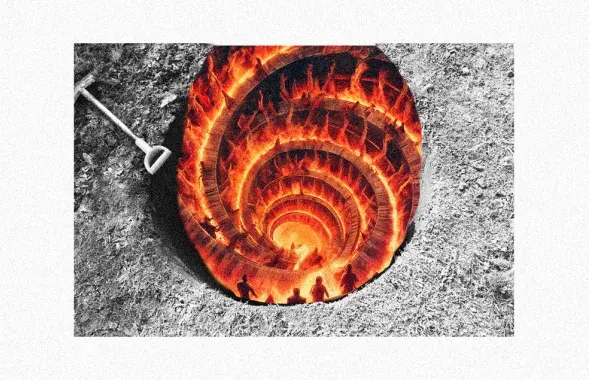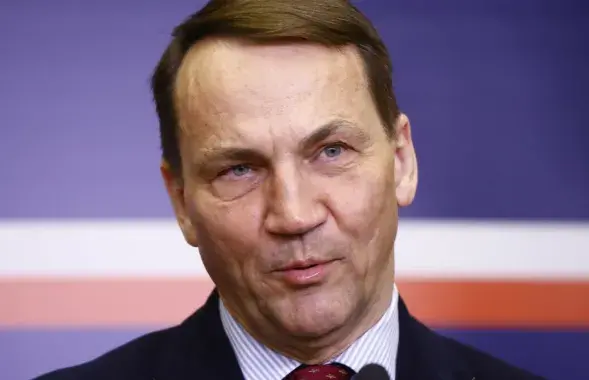What binds Belarus and Iran: an economic interest or anti-American rhetoric?
The European Radio for Belarus decided to find out how promising the cooperation between the two countries could look.
Economist Leanid Zlotnikau has found a sector where our countries could build up economic cooperation.
“Iran is lagging behind in terms of exploring its oil deposits. Belarusian geologists could render assistance to Iran on this issue. Belarus could even drill a small amount of oil there,” he said.
But cooperation between Belarus and Iran will not become economically efficient, he says. Zlotnikau does not believe that the bilateral trade could skyrocket at 14 times.
“I think this is not very realistic. Perhaps, we could expect a two- or three-time increase, not more,” the economist told our radio.
The history of economic relations with yet another friend of Belarus, the United Arab Emirates, displays quite the contrary. Despite numerous visits by president Lukashenka, the trade turnover between our countries has not increased. Rather, it dropped down to $26 million in 2006 from $35 million in 2002.
Alena Barushka, an official from the foreign trade statistics department at the Ministry of Statistics of Belarus, has described economic ties with Venezuela in the following way:
“We should not release these figures, because you can interpret them in a wrong way. We cannot say that we have not traded with Venezuela. However, this is true in terms of numbers,” she told our radio.
Political commentator Siargej Pankouski believes that there is more politics than economy in relations between Iran and Belarus.
Pankouski: “We have heard a lot of fiery rhetoric about relations with China, which was described as our most reliable and long-term partner. Afterwards, we heard the same in regard to India. The same rhetoric was pronounced during a visit to Venezuela. But it later turned out that it brought miserable results. The Belarus’s foreign policy does not seem to be systemic. Rather, it is chaotic and turbulent.
Talking about Belarus and Iran, there is no thought-out foreign economic strategy. This friendship is based on a shaky base like anti-Americanism. In this case, we are not talking about the national interests. We are talking about a very clear interest of a very concrete political group.”
The official site of the Belarus’s Foreign Ministry displays the list of Belarus’s major foreign economic partners in 2006.
The list does not depict Iran in the top 20 of Belarus’s trade partners (see attachment below). Russia tops the list. But when we look at the eastern neighbor in parts, we will see that the trade turnover with some of the Russian regions is several times bigger than with Iran. For example, Belarus’s trade with the remote Sverdlovsk region of Russia totaled over $161 million, three times more than with Iran. Belarus’s trade with Sweden amounted to $480 million, 10 times more than with Iran.
European countries dominate on the list of Belarus’s major economic partners. Trade with Europe is increasing without visits by president Lukashenka.
Attachment #1
Trade turnover with the Russian regions in 2006
Moscow: $4620.7 million
Moscow region: $627.5 million
St. Petersburg: $581.4 million
Smolensk region: $408.2 million
Yaroslavl region: $205.2 million
Nizhniy Novgorod region: $180.2 million
Sverdlovsk region: $161.1 million
Photo by minsk.kp.ru
Attachment #2
Trade turnover with major foreign economic partners in 2006
|
№ |
Country |
Foreign trade turnover |
|
|
2006, |
% against |
||
|
1 |
Russia |
19933956,5 |
125,9 |
|
2 |
Netherlands |
3714482,1 |
144,6 |
|
3 |
Ukarine |
2458735,6 |
136,5 |
|
4 |
Germany |
2422490,3 |
132,4 |
|
5 |
Poland |
1797841,1 |
126,1 |
|
6 |
Great Britain |
1659624,1 |
131,3 |
|
7 |
China |
947764,1 |
132,6 |
|
8 |
United States |
729903,2 |
151,4 |
|
9 |
Italy |
669137,4 |
120,9 |
|
10 |
Lithuania |
603000,6 |
124,0 |
|
11 |
Latvia |
573877,0 |
138,9 |
|
12 |
Sweden |
480520,6 |
136,7 |
|
13 |
France |
473304,8 |
105,0 |
|
14 |
Brazil |
417351,4 |
134,8 |
|
15 |
Kazakhstan |
334345,5 |
155,8 |
|
16 |
Belgium |
260771,4 |
132,3 |
|
17 |
Hungary |
209443,7 |
97,6 |
|
18 |
Czech Republic |
208324,7 |
134,3 |
|
19 |
Switzerland |
182185,5 |
143,8 |
|
20 |
Moldova |
176747,5 |
101,3 |
Photo by minsk.kp.ru

















